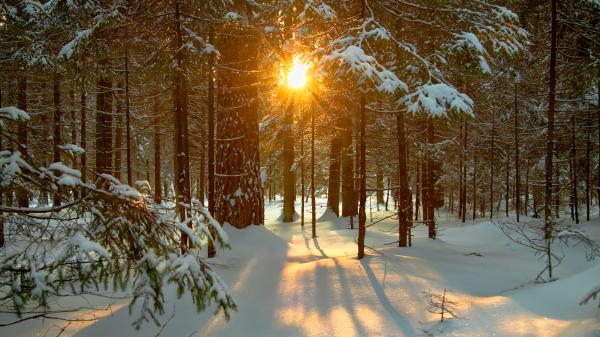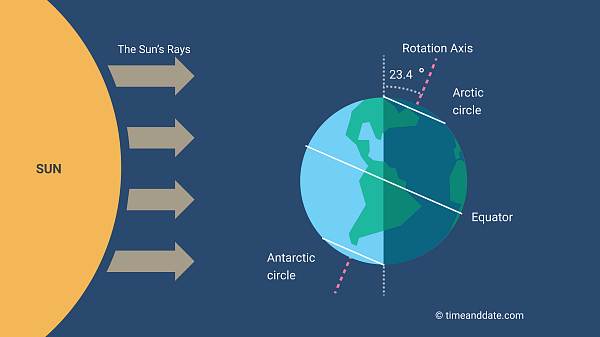10 Things About the December Solstice
Here are 10 things about the December solstice you might not know.

Winter solstice in the Northern Hemisphere.
©bigstockphoto.com/Yanika
1. Day and Night Are Equal
Yes, you read that correctly: While the December solstice is the winter solstice and the shortest day of the year north of the equator and the longest day in the Southern Hemisphere, some locations experience a 12-hour day.
Spoiler alert: It’s not at the equator!
2. A Specific Point in Time
Most people count the whole day as the December solstice. However, the solstice is actually at a specific moment—when the Sun is exactly overhead the Tropic of Capricorn.
In 2024, the December solstice was on December 21, at 10:20 UTC.

The December solstice (not to scale).
© timeanddate.com
3. Second Solstice of the Year
Solstices happen twice a year—once around June 21 and then again around December 21. On the June solstice, the Sun is directly overhead the Tropic of Cancer (latitude 23° 30′ North) in the Northern Hemisphere, while on the December solstice, the Sun shines directly over the Tropic of Capricorn (latitude 23° 30′ South) in the Southern Hemisphere.
4. The Date Varies
The December solstice can happen on December 20, 21, 22, or 23, though December 20 or 23 solstices are rare. The last December 23 solstice was in 1903 and will not happen again until 2303.
5. The Sun ‘Stands Still’
The term solstice comes from the Latin word solstitium, meaning ‘the Sun stands still.’ This is because on this day, the Sun reaches its southern-most position as seen from the Earth. The Sun seems to stand still at the Tropic of Capricorn and then reverses its direction. It’s also common to call it the day the Sun turns around.
6. It’s the First Day of Astronomical Winter
In the Northern Hemisphere, astronomers and scientists use the December solstice as the start of the winter season, which ends on the March equinox. For meteorologists, on the other hand, winter begins three weeks earlier, on December 1.
7. The Earth Isn’t Farthest From the Sun
During winter in the Northern Hemisphere, the Earth is actually closest to the Sun. Different seasons are not defined by how far the Earth is from the Sun. Seasons occur because Earth orbits the Sun on a slant, with an axial tilt of around 23.4 degrees. Therefore, different amounts of sunlight reach the Northern and Southern Hemispheres, causing variation in temperatures and weather patterns thoughout the year.
In fact, the Earth is on its perihelion—the point on the Earth’s orbit closest to the Sun—a few weeks after the December solstice.
8. Earliest Sunset Not on the Solstice
Most places in the Northern Hemisphere see their earliest sunset a few days before the solstice and their latest sunrise a few days after the solstice. This happens because of the difference between how we measure time using watches and the time measured by a sundial.
Why isn’t the year’s earliest sunset on the winter solstice?
9. Daylight Hours Increase Faster in the North
If you are in the Northern Hemisphere, the increase rate of daylight hours depends on your location’s latitude—in more northern latitudes you will see a rapid increase in daylight hours compared to if you’re in the more southern latitudes.
Sunrise and sunset times in your city
10. Celebrated Around the World
Many cultures around the world hold feasts and celebrate holidays around the December solstice, Christmas being a popular example.